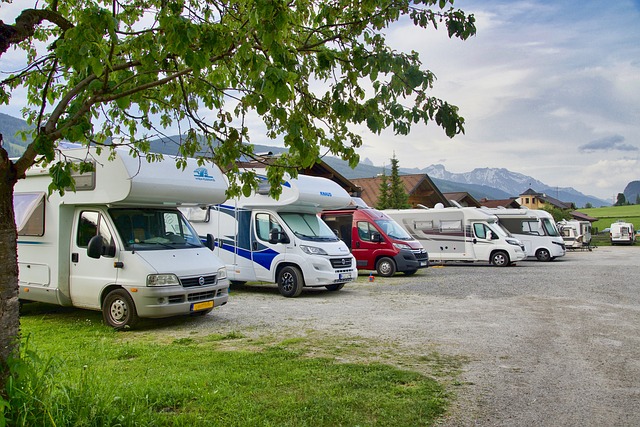When embarking on an RV trip, it's crucial to select routes that accommodate your vehicle's size and weight, utilizing specialized mapping tools designed for RVers to navigate with precision. These tools help you avoid low clearances, weight restrictions, and provide options that may offer time savings despite being longer in distance. Plan your route considering both the shortest distance and estimated travel time. Before departure, check real-time road conditions to avoid detours, align stops with daylight hours for safety, adhere to RV driver fatigue regulations, and track weather forecasts to prepare for changing conditions. Additionally, ensure that suitable campsites are available along your route. By following these RV travel tips, you can navigate confidently, ensuring a smooth, efficient, and enjoyable journey that maximizes the freedom and excitement of RV travel.
Embarking on an RV journey offers unparalleled freedom and adventure, but successful travel hinges on meticulous route planning and savvy navigation. This comprehensive guide, tailored for RV enthusiasts, provides essential tips to navigate the open road with confidence and ease. From optimizing your route for efficiency to mastering advanced navigation techniques, we’ll cover everything you need to know for a smooth travel experience. Learn how to assess your destination and return points, understand road restrictions and RV-friendly routes, and map out ideal campgrounds and overnight stops. Timing your journey to avoid peak traffic and inclement weather will also be key, as well as utilizing the latest GPS and route planning apps designed for RVers. Packing essentials, preparing for emergencies, and leveraging technology for campground reservations and route optimization are all part of the journey. Dive into these RV travel tips to transform your next trip from ordinary to extraordinary.
Optimizing Your Route for Efficient RV Travel: A Step-by-Step Guide

When embarking on an RV travel adventure, careful route planning is paramount for an efficient and enjoyable journey. To optimize your RV travel experience, it’s crucial to consider factors such as road types, elevation changes, weather patterns, and available amenities along your path. Begin by using mapping tools that cater specifically to RVs, which can filter out routes with low clearances or weight restrictions. These tools often incorporate user-generated content that highlights the best and most RV-friendly paths. Next, evaluate potential routes for their length versus time considerations; opting for a longer route that offers less traffic and smoother roads may save you time overall.
Once you’ve narrowed down your options to a few viable routes, delve into the specifics. Check road conditions in real-time through dedicated apps or websites to avoid unexpected detours. Plan your stops strategically to align with daylight hours for safe travel and rest periods that adhere to RV driver fatigue laws. Account for potential weather changes along your route by monitoring forecasts, and if possible, schedule your travel during favorable weather windows. Lastly, consider the type of campsites you prefer and ensure they are accessible along your planned route. By integrating these RV travel tips into your planning process, you’ll be well-prepared for a smooth and efficient journey in your RV.

Embarking on an RV journey can be a delightful and adventurous experience, offering the freedom to explore at your own pace. To ensure your travel is as smooth as possible, it’s crucial to meticulously plan your route ahead of time. RV travel tips suggest starting with a clear understanding of your destination and the roads that lead there. Utilize reliable mapping services to identify RV-friendly routes, avoiding low clearance bridges or tight turns that could impede your vehicle’s progress. Consider the size and weight of your RV when planning, as this will affect the suitability of certain roads and campgrounds.
Once you’ve charted a course, take into account rest stops, points of interest, and potential emergency exit points along your route. RV travel requires careful management of resources such as water, electricity, and propane. Plan your stops to recharge these essentials, and ensure access to dump stations for waste disposal. Check the weather forecasts and road conditions regularly to adapt your plans accordingly. By incorporating these RV travel tips into your preparation, you’ll be better equipped to handle the journey with confidence and ease, transforming your RV into a comfortable moving home that allows you to fully enjoy the open road.
RV travelers can enhance their journey significantly by adhering to strategic route planning and navigation practices. This guide has outlined pivotal steps to optimize your route for efficient travel, ensuring smoother transitions between destinations. By considering road conditions, traffic patterns, and campground availability ahead of time, RV enthusiasts can anticipate and avoid potential pitfalls, making their expedition both enjoyable and hassle-free. Implementing these RV travel tips will not only streamline your route but also enrich the overall experience on the road. Safe travels!
